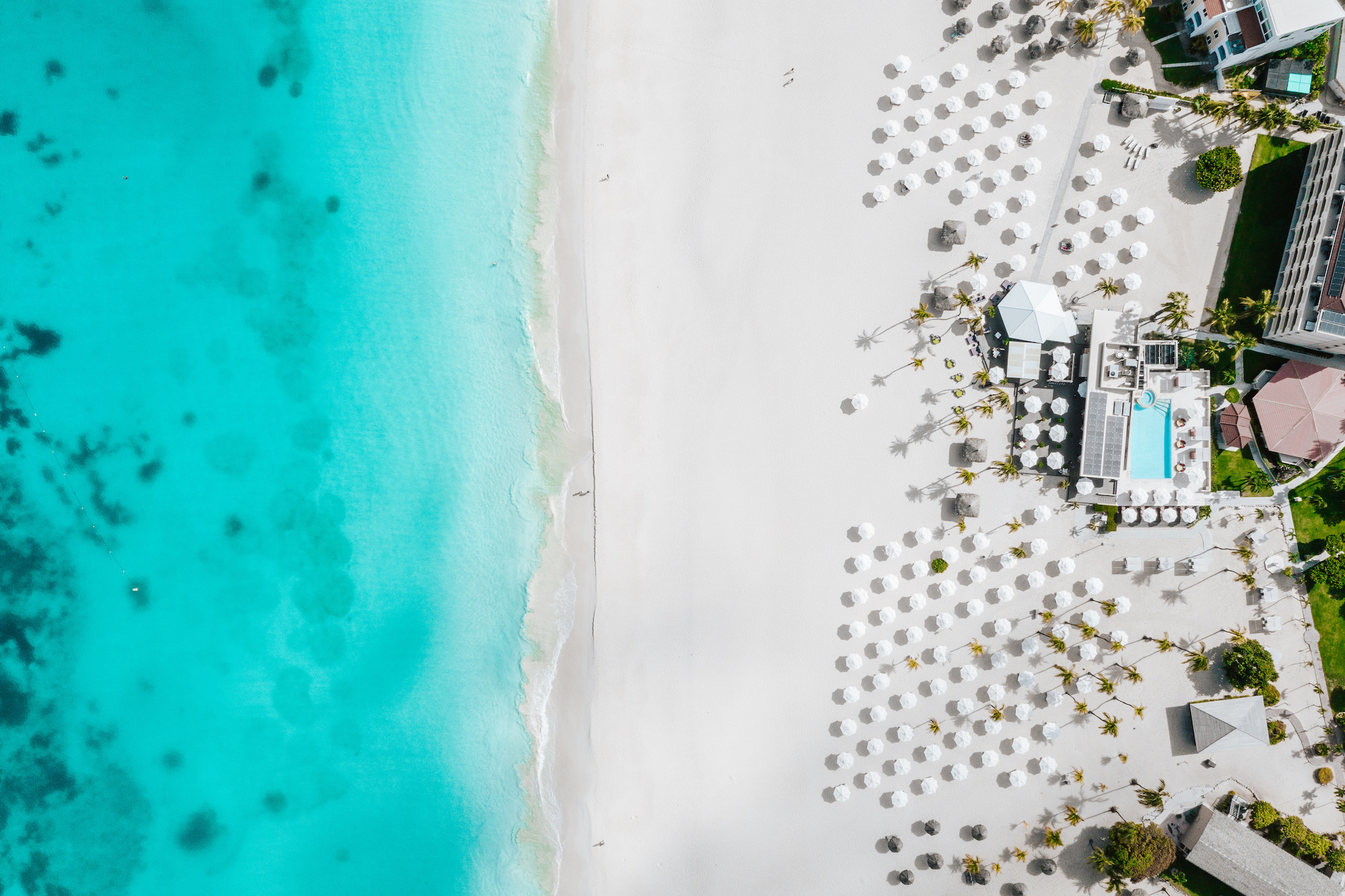NORTH STARS:
Wildlife & Ecosystems
Energy Efficiency
Carbon Footprint
“We had these oil crises, the prices skyrocketed, and the island had to buy oil and burn it to produce electricity and heat water, and that made it unaffordable. So, you start looking at ways to preserve, save, and reduce.”
The yellow eyes peering from California Lighthouse see it all.
Here, a giant painting of Aruba’s endemic owl, the shoco, looms over the north coast of the island like the wise Dr. T.J. Eckleburg in “The Great Gatsby,” watching the High Rise District hotel towers pierce the sky in the distance. The sand whipping through the air isn’t merely from the rippled dunes that cover the arid terrain, but kicked up by cadres of tourists on ATVs that cut the quiet.
This is the portrait of an island at a crossroads, one that’s much rockier than the well-established infrastructure that helps make Aruba the most-repeated Caribbean destination among American travelers. Like many other islands that rely on tourism to support the economy (in Aruba’s case, supplanting an oil industry where rigs and a refinery building remain), there’s a delicate balance between conservation and economics.
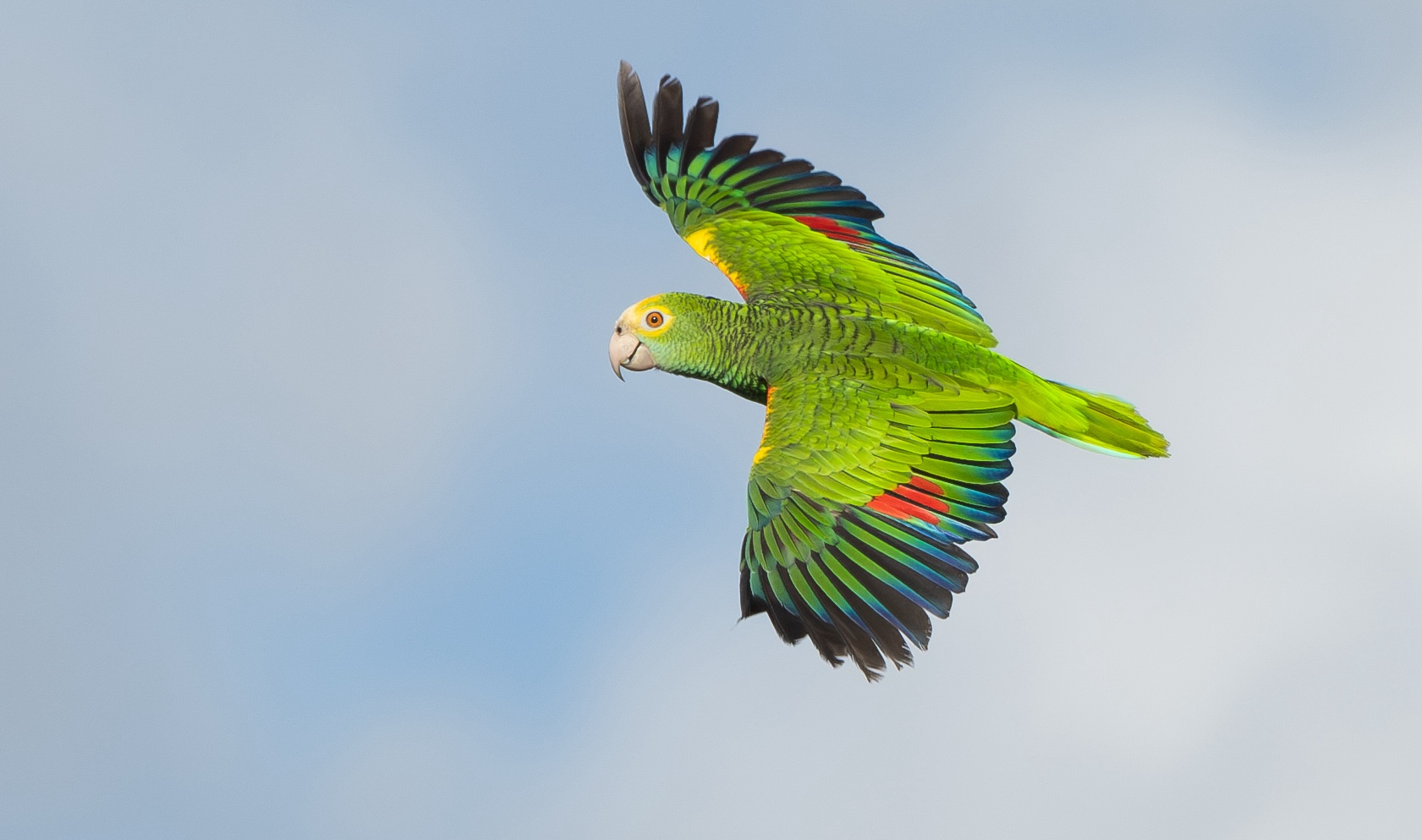
The Lora bird, recently reintroduced on the island. Aruba Conservation Foundation.
Tourism Growth Taxes the Island
Even before hitting its powdery shores, most guests are encouraged to engage with the Aruba Tourism Authority’s Aruba Promise. Consisting of four tenets — “I will consider my footprint on the island; I will embrace a slow pace; I will promise to be a responsible, respectful guest; and I will travel mindfully so that Aruba can remain One Happy Island for generations to come” — these principles encourage mindful, environmentally friendly experiences, like driving responsibly and asking hotels to wash linens just once a week.
In 2024, Aruba also joined Venice, Barcelona, and Bali on the list of spots charging a tourist tax, a $20 per-person fee ostensibly earmarked for sustainability. But reading the fine print, those funds are earmarked for upgrading an existing sewage water treatment plant and infrastructure, “as well as building a new, larger one to handle future demand,” writes the Tourism authority on its website.
That future demand is coming sooner rather than later with the construction of new hotels across the island: Iberostar, St. Regis, and a new tower for Hilton in the High-Rise District that adds 161 more rooms. Hotel Secrets is building a new property in San Nicolas on land once considered sacrosanct as the “people’s beach.” The growth-fueled protests in early 2024 led Minister of Tourism Dangui Oduber to introduce a new policy that only greenlights boutique hotels.
But are new regulations trying to curtail rampant development and environmental and noise pollution too little, too late?
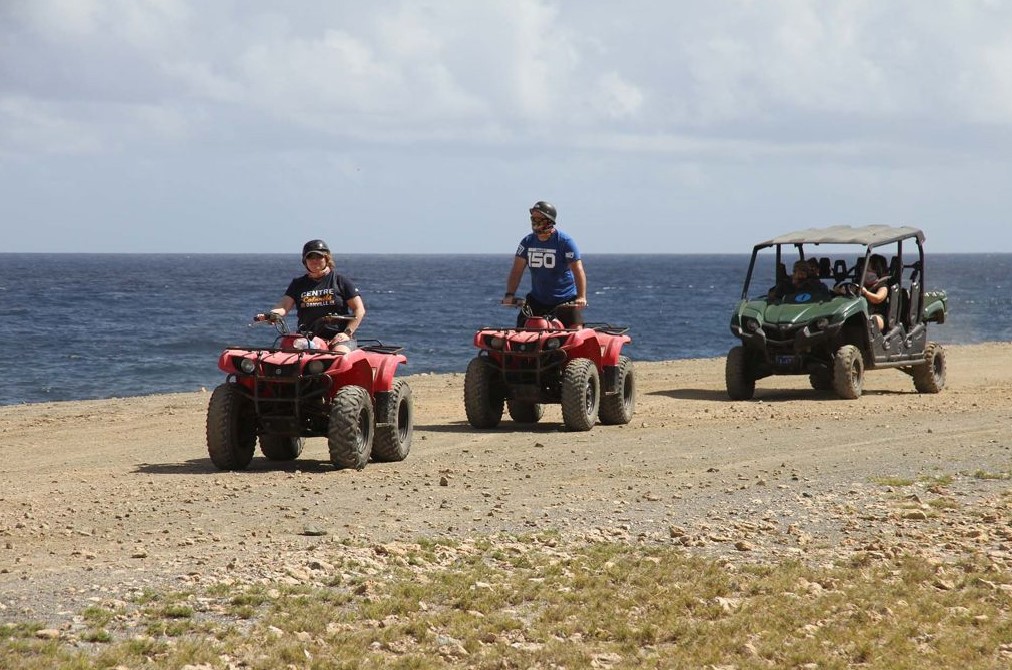
ATVS are common around Aruba. Image courtesy of Visit Aruba.
Balancing Economic and Environmental Sustainability
Besides the aquamarine waters, it’s easy to see what draws travelers to Aruba. Unlike other Caribbean islands, it almost never rains and it’s outside of the hurricane belt. There are convenient direct flights from the U.S., myriad all-inclusive resorts, and no language barrier. As a self-governing kingdom of the Netherlands, most Arubans speak Dutch, English, and Papamiento, a Portuguese-based creole. It’s also easy to get around — which is both a blessing and a curse when it comes to the all-terrain vehicles that tempt those with a thirst for adventure.
Locals lament the dangers both for inexperienced drivers and for the environment. Copious dust kicked up often covers flora, restricting photosynthesis and leaving plants bedraggled in tracks’ wake. The Aruba Promise encourages responsible driving but notably doesn’t discourage offroading. Recently introduced regulations would reduce the number of permits issued to ATV and utility task vehicle (UTV) rental companies, but that does little to reduce existing squadrons and the economic viability of operators who’ve already invested in their fleets.
One of the blissfully quiet places where such vehicles are prohibited outright is at Arikok National Park. Here, petite shocos burrow, popping and hopping from their underground lairs. These lucky ones have evaded common roadside dangers for a bird that makes its home underground, unlike their tree-bound brethren. Others across the island are protected with more grassroots efforts that include citizens and businesses building nests in backyards and grounds where shocos have been spotted, encouraging them to stay in spots that humans deem safe.
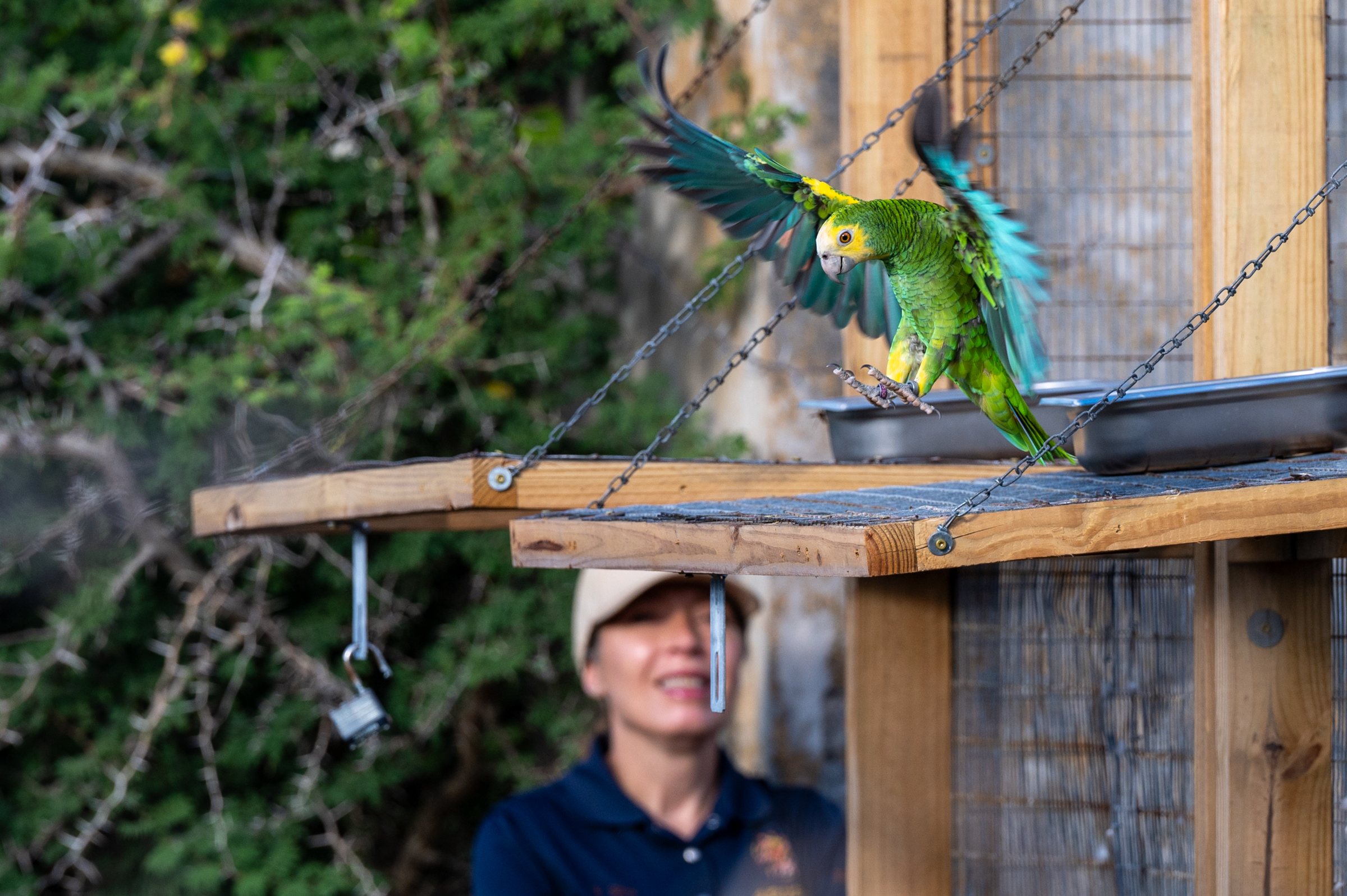
Lora Birds on Aruba are making a comeback. Aruba Conservation Foundation.
Environmentalists Turn the Tide on Extinction
The work protecting Aruba’s endemic owl isn’t the only noteworthy news for birdwatchers. The Lora, a reintroduced population of bright-green parrots once plentiful across the island, looks to thrive.
The yellow-shouldered Amazon parrots were last seen in the wild here almost 75 years ago. A harried call from the Coast Guard in 2022 changed all of that when a boat carrying 33 Loras and other poached wildlife was intercepted trying to flee nearby Venezuela.
Aruba Conservation Foundation officers like Roger Solagnier built a sanctuary at Arikok and nursed the surviving Lora back from dehydration and malnutrition. After more than two years, the flock’s confidence and strength grew; in late fall, they finally spread their wings and fled the protection of their lair. Now, citizen and professional conservationists keep watch for vibrant streaks of citron piercing Aruba’s blue skies, monitoring tenuous progress in this newfound independence.
Solagnier’s other mission is growing plants once thought extinct in a Jurassic Park-like greenhouse in one corner of Arikok. This lush laboratory grew herbage for the Lora and also serves as a haven for some of Aruba’s rarest species. These include citron-yellow spondias mombin — tiny, kumquat-like fruits that used to be plentiful across Aruba. Today, Solagnier found what locals simply call momba in a citizen’s backyard, and is toiling to grow more of the pitted plants. He says his plan is to reintroduce them further down what could be a long road due to construction that threatens open spaces.
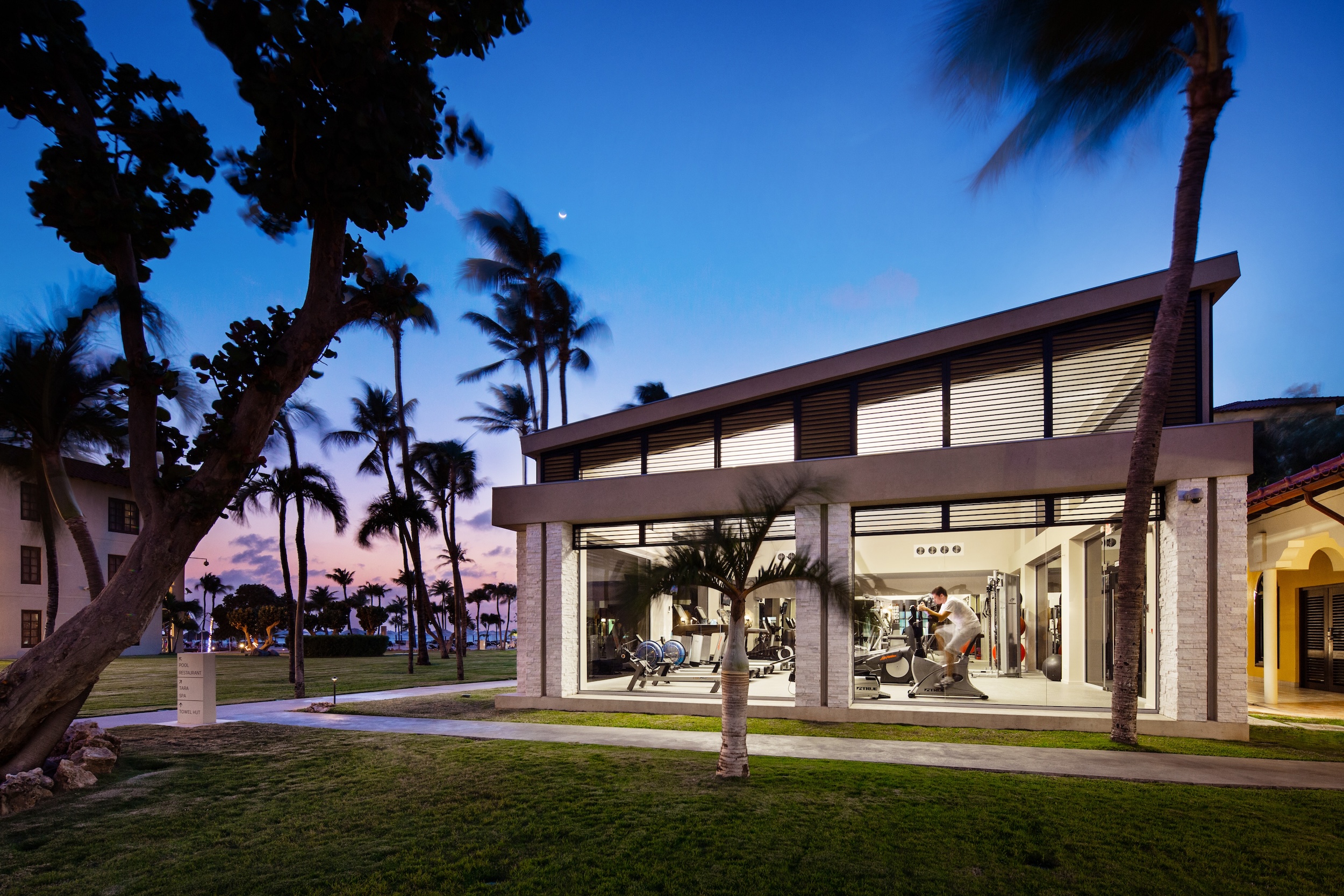
Bucuti & Tara’s fitness center features bikes that power the hotel. Courtesy of Bucuti & Tara.
If Slowly, Conservation Efforts Spread to Hotels
One oasis in that sea of development is the Bucuti Tara-GMC Park nature preserve. Its location near the Noord section of the island — the most developed and busiest — is desirable for more hotels and restaurants. Now 30 acres of private land are off the market and are being reforested, thanks to hotelier Ewald Biemans.
He recalls the economic transition from the oil industry to tourism in the ’80s, and rolling blackouts and brownouts that contributed to his passion for preservation and ingenuity.
“We had these oil crises, the prices skyrocketed, and the island had to buy oil and burn it to produce electricity and heat water, and that made it unaffordable,” he said. “So you start looking at ways to preserve, save, and reduce resource consumption, and that really came together with my love of nature and preserving what we can.”
Biemans’ boutique Bucuti & Tara Beach Resort is the first carbon-neutral hotel in the Caribbean, and was the first of what is today just a few eco-friendly hotels in Aruba. At Bucuti, fitness room machines produce electricity for the power grid, solar panels are responsible for heating water for guest rooms and laundry, and new paints regulate air conditioning needs and contribute to a reduction in carbon dioxide emissions.
The 101-room, four-story resort is zoned for another floor and more guest rooms, but his family wants to keep the hotel’s footprint the same —or smaller, with carbon offsetting — in order to preserve an intimate corner of the island on Eagle Beach, Biemans said.
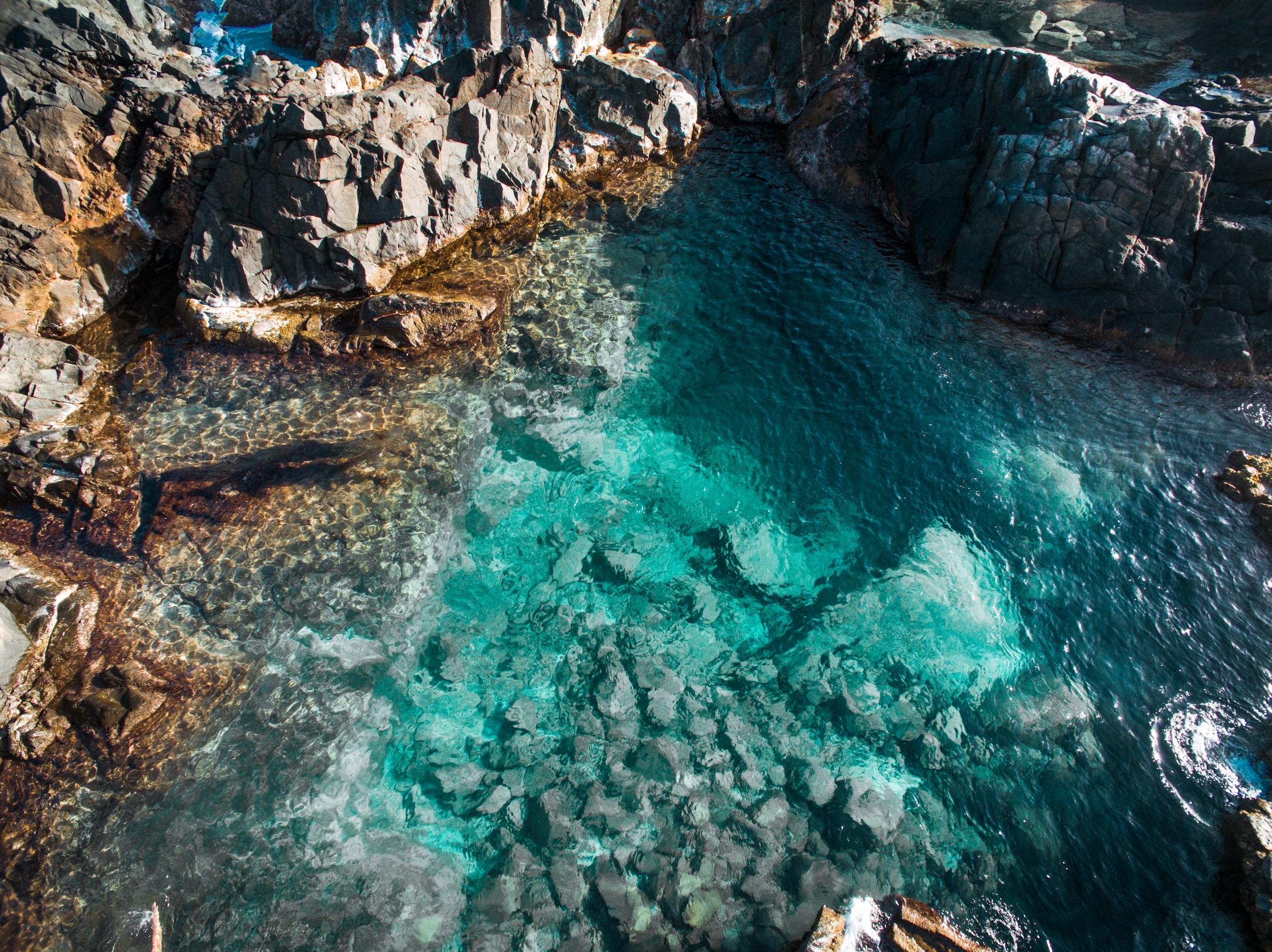
Natural Pool: Arikok National Park
What’s Next for Aruba?
Biemans’ philosophy is a striking dichotomy from the burgeoning sprawl across most other pockets of this 20-by-6-mile island. Only time will tell if the tourism office’s edict to curtail the development of big-box hotel chains holds true. But the recent re-election of tourism minister Oduber, who introduced the measure, seems an important step in the right direction.
The other rocky paths at the crossroads of economic and environmental sustainability also need to be navigated. Updates made this fall to the Aruba Promise suggest adopting a guest mindset, considering your footprint, and embracing a slow pace. But those are seemingly at odds with high-speed vehicles that kick up dust and disrupt flora and fauna. Some of the actionable suggestions for guests — like packing reusable water bottles and reef-safe sunscreen — are easier to influence. Others, like venturing outside of resorts for immersive experiences at nature preserves or national parks, are a harder sell for those who’ve traditionally flocked here to laze in the sun and sand.
In the meantime, hopes are high for the conservationists and activists who watch the skies for young Lora soaring toward a new horizon.

Carley Thornell is a Boston-based travel writer who’s been to 60-plus countries. Her work has appeared in Travel + Leisure, Afar, Robb Report, Skift, Global Traveler, The Boston Globe, and many other publications. Her beats (and passions) include sustainability, accessibility, epicurean delights, luxury, and – most recently with the addition of her son – family travel. Carley has a Pulitzer Prize in spot news reporting.


